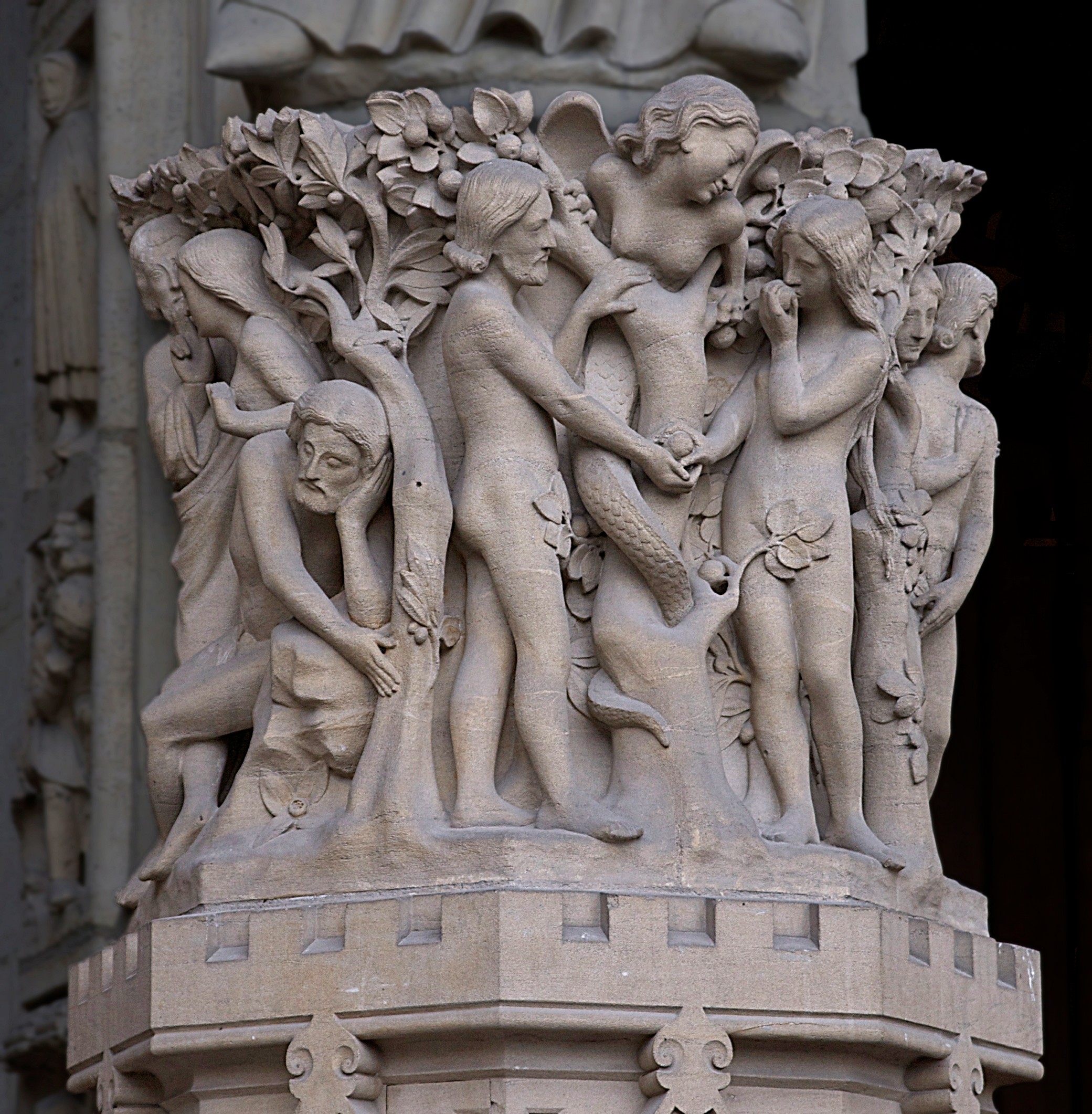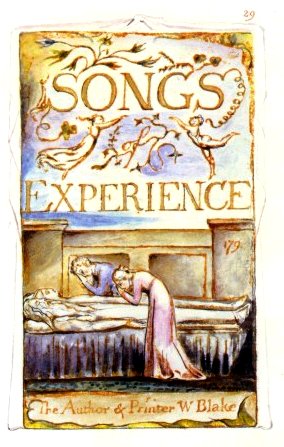|
Laughing Song
"Laughing Song" is a poem published in 1789 by the English poet William Blake. This poem is one of nineteen in Blake's collection ''Songs of Innocence''. Analysis of the poem "Laughing Song" is a lyric poem, written in three stanzas of four-beat lines rhyming aabb. The title of this poem and its rhyme scheme is very appropriate for the message that Blake is trying to convey. The title in itself states that this is a song about laughter, and the three stanzas give this impression, especially in the final line of the second stanza: "With their sweet round mouths sing 'Ha, Ha, He.' ", and the final line of the third stanza: "To sing the sweet chorus of 'Ha, Ha, He.' " Using words like "sing" and "chorus" for emphasis, Blake sets out to lure readers to the happiness of prelapsarian times, when things were unspoiled and innocent. Blake is inviting the readers to take part in the celebration; after all nature and all the people have begun to laugh and be merry, he wants all to come ... [...More Info...] [...Related Items...] OR: [Wikipedia] [Google] [Baidu] |
Laughing Song
"Laughing Song" is a poem published in 1789 by the English poet William Blake. This poem is one of nineteen in Blake's collection ''Songs of Innocence''. Analysis of the poem "Laughing Song" is a lyric poem, written in three stanzas of four-beat lines rhyming aabb. The title of this poem and its rhyme scheme is very appropriate for the message that Blake is trying to convey. The title in itself states that this is a song about laughter, and the three stanzas give this impression, especially in the final line of the second stanza: "With their sweet round mouths sing 'Ha, Ha, He.' ", and the final line of the third stanza: "To sing the sweet chorus of 'Ha, Ha, He.' " Using words like "sing" and "chorus" for emphasis, Blake sets out to lure readers to the happiness of prelapsarian times, when things were unspoiled and innocent. Blake is inviting the readers to take part in the celebration; after all nature and all the people have begun to laugh and be merry, he wants all to come ... [...More Info...] [...Related Items...] OR: [Wikipedia] [Google] [Baidu] |
William Blake
William Blake (28 November 1757 – 12 August 1827) was an English poet, painter, and printmaker. Largely unrecognised during his life, Blake is now considered a seminal figure in the history of the poetry and visual art of the Romantic Age. What he called his " prophetic works" were said by 20th-century critic Northrop Frye to form "what is in proportion to its merits the least read body of poetry in the English language". His visual artistry led 21st-century critic Jonathan Jones to proclaim him "far and away the greatest artist Britain has ever produced". In 2002, Blake was placed at number 38 in the BBC's poll of the 100 Greatest Britons. While he lived in London his entire life, except for three years spent in Felpham, he produced a diverse and symbolically rich collection of works, which embraced the imagination as "the body of God" or "human existence itself". Although Blake was considered mad by contemporaries for his idiosyncratic views, he is held in high regard b ... [...More Info...] [...Related Items...] OR: [Wikipedia] [Google] [Baidu] |
Songs Of Innocence
''Songs of Innocence and of Experience'' is a collection of illustrated poems by William Blake. It appeared in two phases: a few first copies were printed and Illuminated manuscript, illuminated by Blake himself in 1789; five years later, he bound these poems with a set of new poems in a volume titled ''Songs of Innocence and of Experience Shewing the Two Contrary States of the Human Soul''. Blake was also a painter before the creation of ''Songs of Innocence and Experience'' and had painted such subjects as Oberon, Titania (A Midsummer Night's Dream), Titania, and Puck (folklore), Puck dancing with fairies. "Innocence" and "Experience" are definitions of consciousness that rethink John Milton, Milton's existential-mythic states of "Paradise" and "Fall". Often, interpretations of this collection centre around a mythical dualism, where "Innocence" represents the "unfallen world" and "Experience" represents the "fallen world". Blake categorizes our modes of perception that tend t ... [...More Info...] [...Related Items...] OR: [Wikipedia] [Google] [Baidu] |
Fall Of Man
The fall of man, the fall of Adam, or simply the Fall, is a term used in Christianity to describe the transition of the first man and woman from a state of innocent obedience to God in Christianity, God to a state of guilty disobedience. * * * * The doctrine of the Fall comes from a biblical interpretation of Book of Genesis, Genesis, chapters 1–3. At first, Adam and Eve lived with God in the Garden of Eden, but the Serpents in the Bible, serpent tempted them into Taboo#In religion and mythology, eating the Forbidden fruit, fruit from the tree of knowledge of good and evil, which God had forbidden. After doing so, they became ashamed of their nakedness and God expelled them from the Garden to prevent them from eating from the Tree of life (biblical), tree of life and becoming Immortality, immortal. In Nicene Christianity, mainstream (Nicene) Christianity, the doctrine of the Fall is closely related to that of original sin or ancestral sin. They believe that the Fall brought sin ... [...More Info...] [...Related Items...] OR: [Wikipedia] [Google] [Baidu] |
Postlapsarian
In Calvinist theology, lapsarianism is the study of the logical order of God's decree to ordain the fall of man in relation to his decree to save some sinners through election and condemn others through reprobation. Several opposing positions have been proposed, all of which have names with the Latin root ''lapsus'' (meaning fall). Supralapsaranism and infralapsarianism assert that election and reprobation respectively preceded and succeeded the Fall. Paedolapsarianism and credolapsarianism assert to whom baptism should be administered and the kingdom of heaven belongs, respectively arguing for children of believers and adults. Overview Supralapsarianism (also called ''antelapsarianism'', ''pre-lapsarianism'' or ''prelapsarianism'') is the view that God's decrees of election and reprobation logically ''preceded'' the decree of the Fall. Infralapsarianism (also called ''postlapsarianism'' and ''sublapsarianism'') asserts that God's decrees of election and reprobation logically ''s ... [...More Info...] [...Related Items...] OR: [Wikipedia] [Google] [Baidu] |
William Blake Archive
The William Blake Archive is a digital humanities project started in 1994, a first version of the website was launched in 1996.{{cite journal, last1=Crawford, first1=Kendal, last2=Levy, first2=Michelle, journal=RIDE: A Review Journal for Digital Editions and Resources, date = February 2017, issue = 5, title = The William Blake Archive, doi = 10.18716/ride.a.5.5 The project is sponsored by the Library of Congress and supported by the University of North Carolina at Chapel Hill and the University of Rochester.{{Cite web, url = http://www.blakearchive.org/blake/site.info.html, publisher = The William Blake Archive, title = The William Blake Archive Site Info, access-date = March 19, 2013, date = June 14, 2011 Inspired by the Rossetti Archive, the archive provides digital reproductions of the various works of William Blake, a prominent Romantic-period poet, artist, and engraver, alongside annotation, commentary and scholarly materials related to Blake.{{cite journal, title = Be ... [...More Info...] [...Related Items...] OR: [Wikipedia] [Google] [Baidu] |
Songs Of Innocence And Of Experience
''Songs of Innocence and of Experience'' is a collection of illustrated poems by William Blake. It appeared in two phases: a few first copies were printed and illuminated by Blake himself in 1789; five years later, he bound these poems with a set of new poems in a volume titled ''Songs of Innocence and of Experience Shewing the Two Contrary States of the Human Soul''. Blake was also a painter before the creation of ''Songs of Innocence and Experience'' and had painted such subjects as Oberon, Titania, and Puck dancing with fairies. "Innocence" and "Experience" are definitions of consciousness that rethink Milton's existential-mythic states of "Paradise" and "Fall". Often, interpretations of this collection centre around a mythical dualism, where "Innocence" represents the "unfallen world" and "Experience" represents the "fallen world". Blake categorizes our modes of perception that tend to coordinate with a chronology that would become standard in Romanticism: childhood is a ... [...More Info...] [...Related Items...] OR: [Wikipedia] [Google] [Baidu] |




